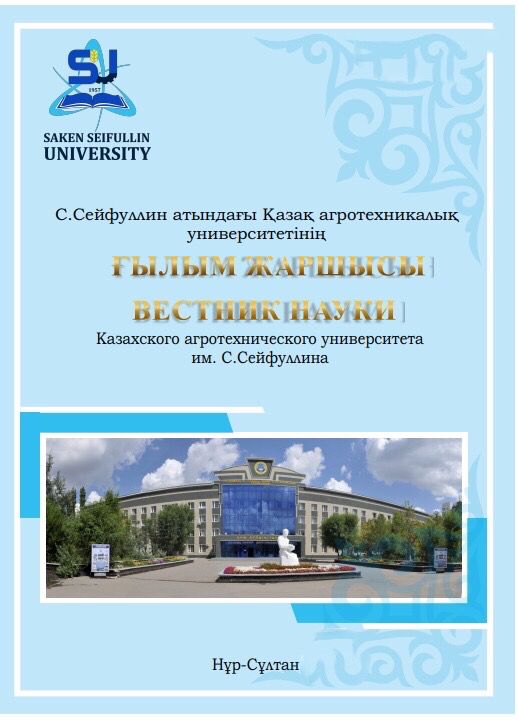GRAZIERY OF KAZAKH COARSE-WOOLED FAT-TAILED SHEEPYOUNGSTER
Keywords:
mixed fodder, graziery, feed, live weight, Kazakh coarse-wooled fat-tailed sheep breed, slaughter weight, muttonAbstract
The article presents the results of research oflambs fattening of Kazakh coarsewooled fat-tailed sheep breed in the conditions of Akmola region with using of mixed fodder of "Tsesna" LLP, grain wastes and without additional feeding.In our studies,
when studying of live weight and other signs of meat productivity variability of Kazakh coarse-wooled fat-tailed lambs on graziery, data were obtained for 60 days of graziery.Three groups of experimental animals-analogues were observed: the diet of
first experimental group included mixed feed, in the second experimental group - grain wastes, and the control group in the graziery was kept without additional feeding. As a result of studies on slaughter parameters of I, II and control groups of lambs, the
slaughter weight was - 46.5 kg, 45.2 kg and 45.0 kg, respectively, and the carcass weight after slaughter was: in I group – 20.75 kg, in II group - 18.7 kg and in the control group 18.0 kg. The slaughter yield was as follows: I group - 47.4 kg, II group -43.6 kg
and 41.8 kg in the control group. Results of using of mixed fodders showed that the lambs of Kazakh coarse-wooled fat-tailed breed, when graziery with including mixed fodder in diet, had a higher meat production, and carcasses of experimental lambs were
classified in the highest category. Also the results of live weight dynamics, commodity evaluation of carcasses and meat quality were analyzed, and growth, development, absolute and average daily gain of lambs weight were studied; qualitative parameters of
mutton were determined. Also it is established that the introduction of mixed fodder in the diet allowed to obtain a higher absolute and average daily weight gain, which contributed to an increase of the production profitability of young mutton to 84.3%.

